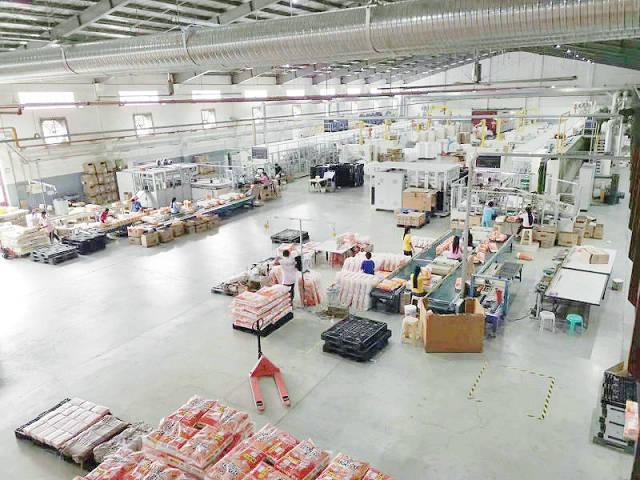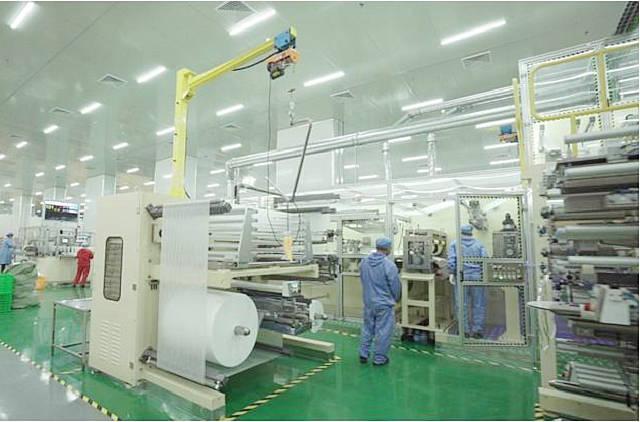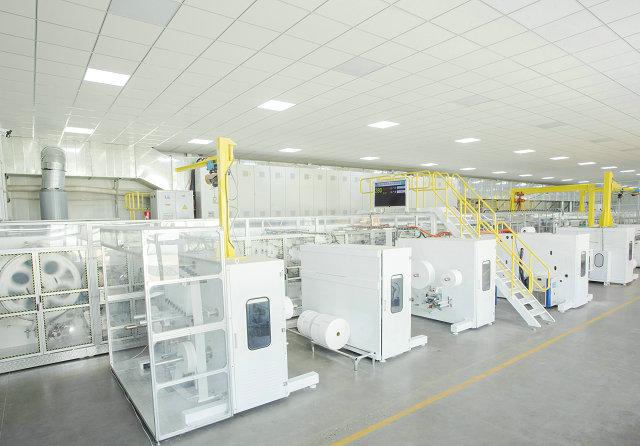Author:Haina Machinery Factory FROM:Diaper Machinery Manufacturer TIME:2024-11-15
Optimizing production efficiency in sanitary pad manufacturing machine is crucial for meeting the rising demand while ensuring quality and cost-effectiveness. As the hygiene products market grows, manufacturers face increasing pressure to enhance their processes. This article will explore various strategies and technologies that can be implemented to boost efficiency in sanitary pad production, from optimizing resource management to incorporating advanced machinery.
To optimize production efficiency, it is essential to have a thorough understanding of the entire manufacturing process. This includes raw material sourcing, product design, production line setup, and quality control. Each step should be analyzed to identify potential bottlenecks and inefficiencies. Manufacturers should conduct regular assessments of their workflows and implement lean manufacturing principles to streamline operations, reduce waste, and enhance productivity.
The choice of machinery plays a significant role in production efficiency. Investing in modern equipment that offers higher speeds, better precision, and automated features can vastly improve output. For instance, machines with automated cutting and packaging capabilities can reduce manual labor and speed up the production cycle. Furthermore, upgrading to energy-efficient machines can lower energy costs, contributing to overall savings and sustainability.

Lean manufacturing focuses on minimizing waste without sacrificing productivity. By implementing techniques such as Just-In-Time (JIT) inventory and value stream mapping, manufacturers can streamline their processes. JIT reduces excess inventory and ensures that materials arrive only when needed, minimizing storage costs. Value stream mapping helps identify areas where time and resources are wasted, enabling targeted improvements.
A well-managed supply chain is vital for efficient production. Manufacturers should establish strong relationships with suppliers to ensure timely delivery of raw materials. Implementing supply chain management software can improve visibility and coordination across the production process. This technology enables real-time tracking of inventory levels and order statuses, allowing manufacturers to respond swiftly to any disruptions.
Employees are at the heart of any manufacturing operation, and their skills directly impact production efficiency. Regular training programs should be established to keep employees updated on the latest techniques and technologies. Encouraging a culture of continuous improvement will empower workers to identify inefficiencies and suggest solutions. Engaged employees are more likely to take ownership of their roles, leading to improved performance and output.
The integration of automation and technology is a game-changer in manufacturing efficiency. Automated systems can handle repetitive tasks, reducing human error and increasing speed. Technologies like IoT (Internet of Things) provide valuable data insights that help monitor machine performance and predict maintenance needs. By leveraging these advancements, manufacturers can optimize their operations and reduce downtime significantly.
Maintaining high-quality standards is crucial in sanitary pad manufacturing machine. Implementing rigorous quality control measures throughout the production process can prevent defects and minimize rework. Utilizing statistical process control (SPC) allows manufacturers to monitor processes in real-time and make necessary adjustments. Regular audits and inspections ensure compliance with industry standards and enhance overall product quality.

In today's environmentally conscious market, integrating sustainability into production processes can improve efficiency and brand reputation. Manufacturers should explore eco-friendly materials and sustainable production methods. Reducing waste through recycling initiatives and optimizing energy use contributes not only to cost savings but also to corporate social responsibility goals. Sustainable practices can attract environmentally conscious consumers, enhancing market competitiveness.

Finally, fostering a culture of continuous improvement is essential for long-term efficiency. Manufacturers should regularly review their processes and stay adaptable to changing market demands. Employing methodologies like Six Sigma can help identify inefficiencies and provide a structured approach to problem-solving. By remaining flexible and open to change, companies can sustain high levels of productivity and responsiveness in their manufacturing operations.
Optimizing production efficiency in sanitary pad manufacturing machine involves a multifaceted approach that encompasses understanding production processes, investing in technology, and empowering employees. By implementing lean manufacturing principles, enhancing supply chain management, and maintaining stringent quality control, manufacturers can significantly boost their efficiency. Embracing sustainability practices and fostering a culture of continuous improvement will not only enhance productivity but also position companies favorably in a competitive market. Ultimately, these strategies lead to better resource management, reduced costs, and increased customer satisfaction.
